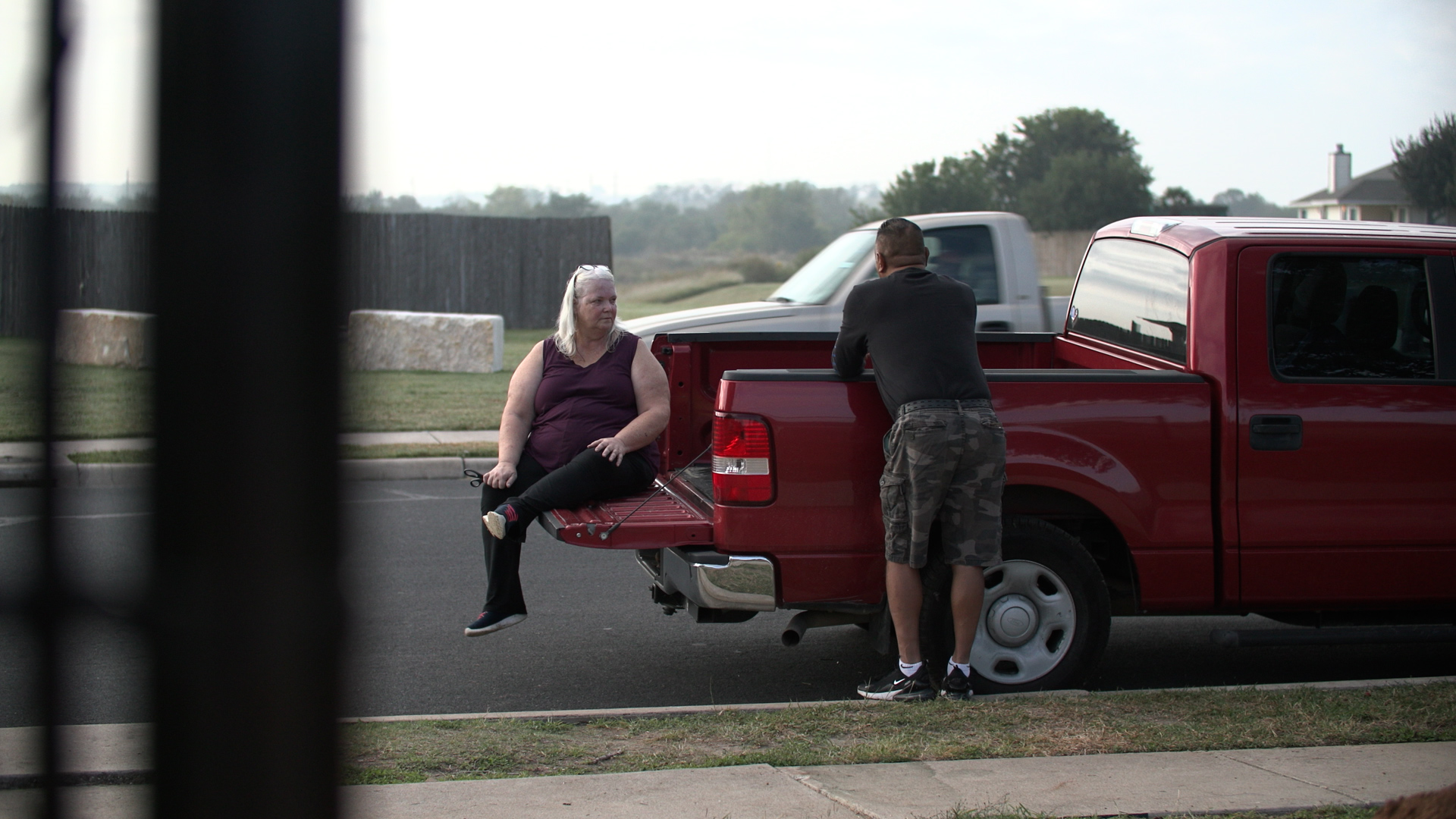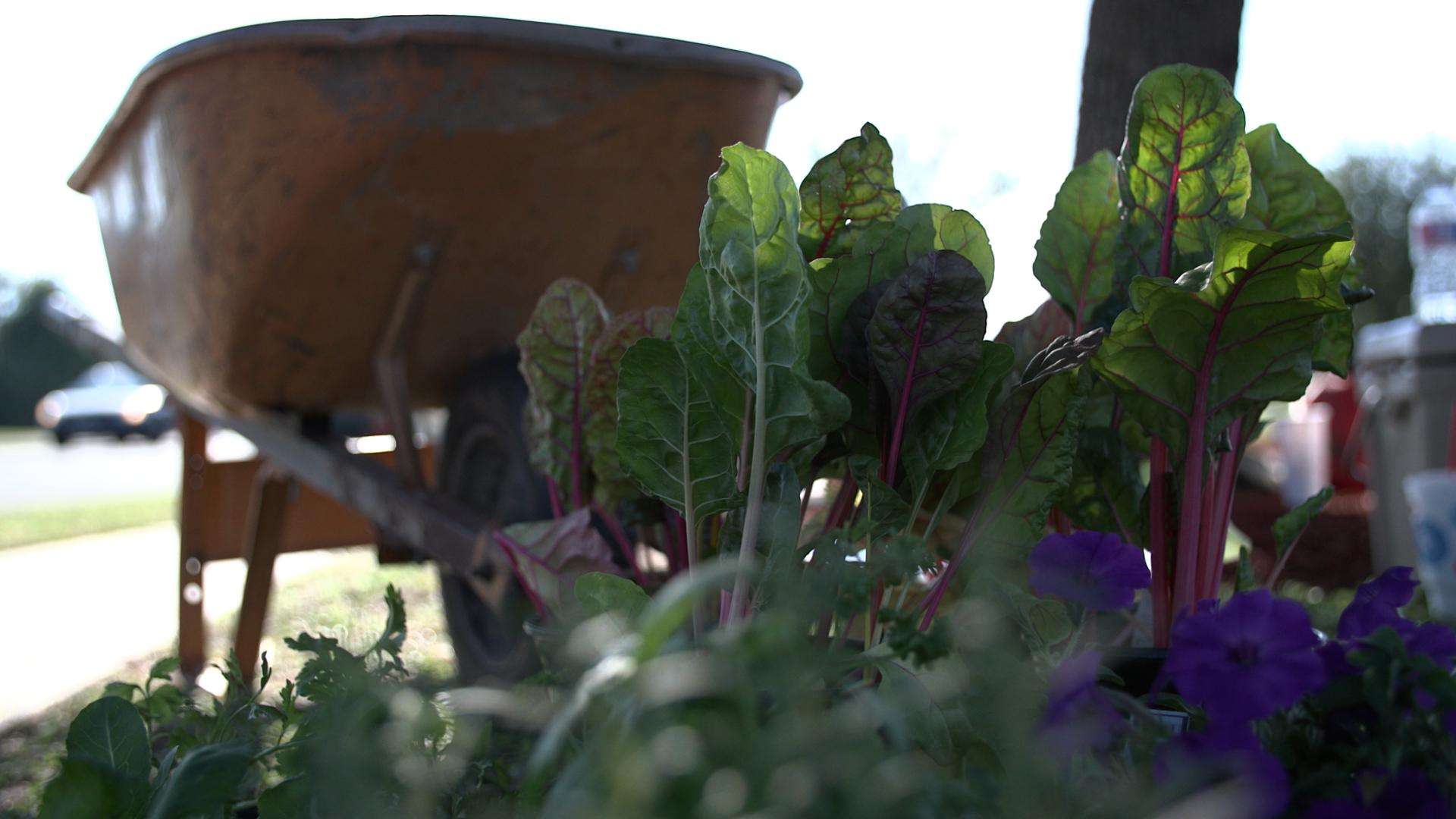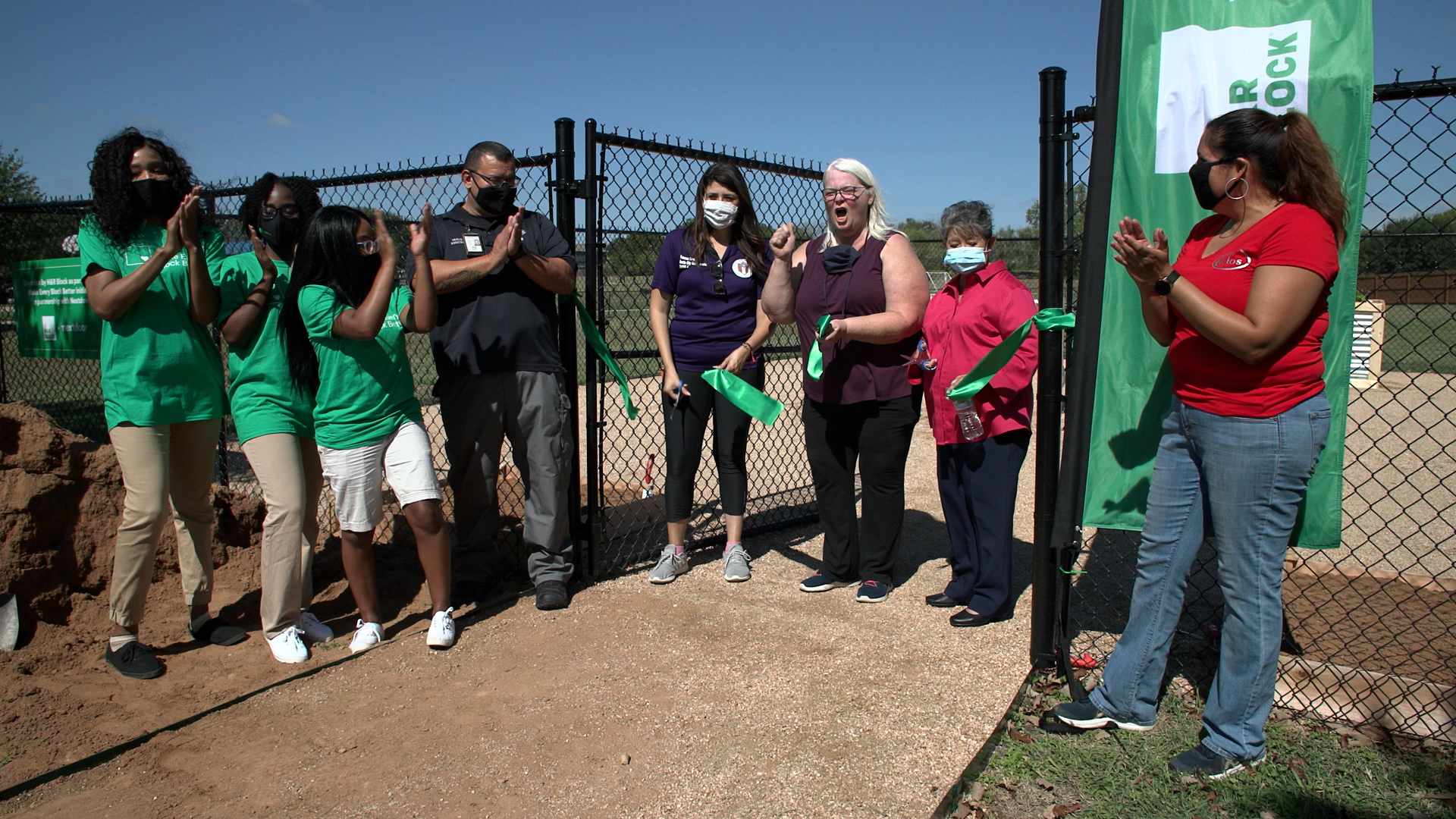Homegrown
When Trish Burton was a child, a healthy snack was usually right at her doorstep.
“I grew up on a farm,” Burton says. “If we got hungry in the middle of the day, we went to the garden, we’d grab a cucumber ... and eat it. You know, peel and all.”
Burton traded in her gardening gloves when she moved to the Los Cielos neighborhood in Del Valle in 2008 and joined the homeowners association. Compared to the 30 mile trips to the grocery store she grew up taking, a 12 mile jaunt sounded as simple as plucking a cucumber from the vine.
“But then I started talking to my neighbors,” Burton says. “I didn't realize that we were so far out and so far removed from grocery stores.”
Los Cielos Homeowners Association Vice President Trish Burton talks with a neighbor outside the community garden. Burton hopes the garden will help build stronger relationships between community members.
Del Valle is a food desert, meaning at least 33% of the low-income population lives more than a mile from a grocery store. Residents with access to a car often have to sit in traffic for over an hour to get to a grocery store, due in part to infrastructure issues in the area. Those without transportation have to rely on friends and family to take them shopping, or on public transportation.
“They can't just pick up and go to town because they need something,” Burton says. “But they can ask a neighbor, ‘Can you go get me a tomato?’”
Burton went back to her roots for a solution to her neighborhood’s problem: a community garden. Burton envisioned a local plot of land bursting with fresh produce that neighbors could pick from as needed as a way to supplement their diet.
“If their family needs produce, if they don't have the money to go buy the expensive produce at a convenience store or even at the supermarket, that's what it's there for,” says Burton. “It's there to help people out. It's there to be fresh. It's there to be nutritious.”
Rainbow Chard and other vegetables prepare to be planted at the new Los Cielos neighborhood community garden. Del Valle is a food desert, making it difficult for residents to access fresh produce.
That level of accessibility has been shown to improve health outcomes in communities. Studies have shown that community gardeners are more likely than people who don’t garden or even home gardeners to consume the recommended daily servings of fruits and vegetables. And eating fresh produce can also improve health outcomes like lowering blood pressure or reducing the risk for diabetes, which can be a problem in food deserts.
The idea of building a community garden took root for Burton and Los Cielos HOA President Janie Serna several years ago.
“We've been wanting to put a community garden in for the longest time,” Serna says. “We just didn't have the funds to do it.”
Los Cielos Homeowners Association President Janie Serna (center) talks with Idali Vera, Emilio Avilés and Nicolas Villanueva as they build planter boxes for the community garden. Several planters have been built tall to make them more accessible to older residents.
Now serving as the Los Cielos HOA vice president, Burton was in a position to search for the necessary funding. She applied for a grant from Nextdoor and H&R Block’s Make Every Block Better program. The Los Cielos community garden was one of only 10 projects nationwide to be selected for the grant.
“They called me and told me, ‘Congratulations, your project has been accepted and we'll build your garden,’” Burton says. “So we've just taken it and ran from there.”
Burton’s horticultural background came in handy as the garden went into planning stages. Decomposed granite has been selected to discourage weeds. Raised planter boxes will line the perimeter, wide and long enough to allow the neighborhood to plant tiers of vegetables that require different depths to grow. Their height will also allow older residents to pick produce with ease.
“They can get in and they don't have to bend over to be able to garden,” Burton says.
Accessibility was a factor in another garden item: specialized fruit trees called Reachables. These fruit trees max out at a height of roughly seven feet but will produce full-sized fruit.
While the HOA won’t initially have residents plant their own vegetables, Burton has been reaching out to neighbors to get feedback on what they’d like included in the garden.
“I'm really, really encouraged by the number of people that have answered me of what they want and that they're excited for this,” Burton says. “Not only am I hoping that it promotes healthier eating, but I'm hoping that it promotes neighbor speaking to neighbors and helping neighbors out.”
But not all the feedback has been positive. Norma Garcia lives next to the proposed garden plot. She is unconvinced that the garden will alleviate any food insecurity issues for the area.
“We have plenty of stores that have fresh produce,” Garcia says. “So it’s not like we don’t have access to it.”
Nearby gas stations do offer produce, but convenience comes at a price. There is less variety than shoppers would find at a supermarket, and it often costs more. A 2017 study found that food staples were anywhere from 10 to 54% more expensive at smaller stores compared to supermarkets.
From left to right, Serna, Travis County Precinct 4 Commissioner Margaret Gomez, Austin City Council Member Vanessa Fuentes, Travis County Precinct 4 Constable George Morales, and volunteers cheer as Los Cielos Homeowners Assocation Vice President Trish Burton (center) cuts the ribbon officially opening the new community garden.
Resident James Hickey is optimistic about the opportunities the garden affords, to both try gardening and have a chance to build relationships with his neighbors.
“This is a way to find a commonality, and break barriers, ideally” Hickey says. “[It's] a chance to build relationships.”
A series of planter boxes and some fruit trees may not end issues like community cohesion or food insecurity. But Burton hopes that this 40 square foot space will help a sense of community take root.
“I'm hoping that this garden unwinds us from our own lives and allows us to talk to our neighbors,” Burton says. “This doesn't have to stop at just fruits and vegetables.”
Community journalism doesn’t happen without community support.
Got story ideas, advice on how we can improve our reporting or just want to know more about what we do? Reach out to us at news@klru.org.
And if you value this type of reporting, then please consider making a donation to Austin PBS. Your gift makes the quality journalism done by the Decibel team possible. Thank you for your contribution.
More in Health:
See all Health posts









Contact Us
Email us at news@klru.org